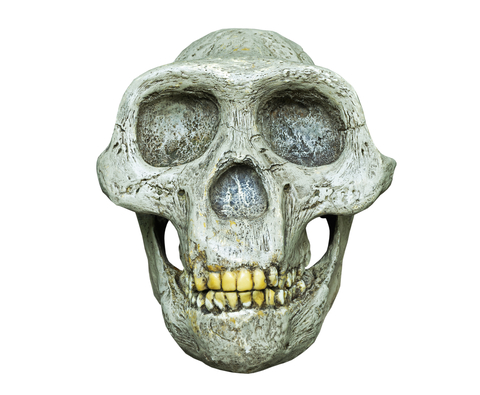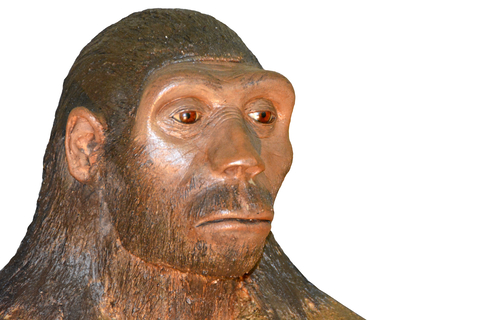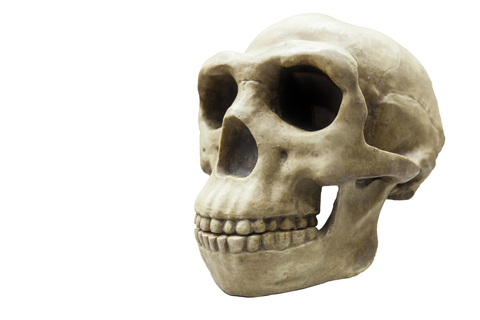

The evolution of human beings is a long drawn process, which involved a change from early humans to modern humans over millions of years. As per the various scientific studies, it is believed that humans have evolved from ape like creatures. They could not even walk straight and they used to live like animals. With time the size of the brain increased, paved the way for the emergence of modern humans through the process of evolution .
Gradually, their social behavior also developed. Besides, they acquired great skill to make tools. A more developed brain also allowed humans to store information. This enhanced the speed of cultural adjustment and now modern humans were no more dependent on biological advancements. Ultimately, this process helps us to know about the scientific evolution of modern humans.
Evolution refers to a biological term, which refers to the process of change in all living species on the earth. This is a process of modifications in the living organism like how they have evolved from their ancestors. It includes a few mechanisms such as − Mutation, Gene Flow, Genetic Drift, and Natural Selection.AS a result of these processes the species originate , develop and adapt to their physical and social environment.
The evolution of humans is a lengthy process of gradual development by which humans originated from ape-like ancestors. Humans and apes have so many similarities such as long arms, and a big brain, that most experts think that they must have evolved from the same creature. These ape like creatures were called hominids.
The oldest hominid is called Australopithecus. The different categories of australopithecus have been found through fossils, which included australopithecus africanus, australopithecus robustus boisie and afarensis.

Australopithecus
Evidence of Australopithecus afarensis has been found from Etopia.. In this species, experts have observed the final stage of bipedal locomotion. They could stand straight but it still retained some features of apes.
The best known australopith is ‘Lucy’, a skeleton of Australopithecus afarensis of 3 million years ago, found in 1974nat the site of Hardar in Ethiopia by Donald C. Jhonson and his student Tom Gray.
Johnson and Gray were searching out for animal bones and they accidently found a tiny fragment of arm bone. Johnson immediately recognized it as belonging to hominids.
This skeleton was named ‘Lucy’ as ‘Lucy in the sky with Diamond’, ‘the Beatles’ song was playing on the radio when Jhonson’s team celebrated the discovery of this fossil.
The genus homo is different from Australopithecus, as its brain was bigger in size. The early fossils of the Homo were “homo habilis”, which have been discovered in Kenya.
Homo Habilis lived 2 million years ago and had a bigger brain, which was almost 800cc. Homo Habilis were believed to be tool-makers.
They were initially put in the family of Australopithecus but later detailed research proved that they should be regarded as early human specimens.

The origin of homo habilis was succeeded by the emergence of new species called Homo Erectus. It had a larger brain, about 1000cc.
They were much taller in size than Homo habilis. They could now stand erect.
Their fingers developed and thus developed a grip which helped them to hold things firmly. Now they could make tools with great skill and started travelling long distances.

Skull of Erectus
Gradually Homo erectus disappeared nearly around 400,000 years ago. In the meantime, a new species of Homo emerged in the path of human evolution about 125,000 years ago.
These were known as Homo Neanderthals or Homo sapiens Neanderthals. Their fossils were found in Germany in the 20th century.
In Neanderthals, brain size was further expanded and evidence of ‘culture’ began to emerge. But neanderthalesis skulls were different from modern humans.
Then emerged the Homo sapiens, which literally means thinking or wise man, from which modern humans have evolved.
Their brain size was 1350cc, and now they could make more refined tools with a bigger brain.
The homo sapiens developed interaction with their social environment and began to live in communities. They started building simple shelters for staying longer in a place.
They were probably the first creatures to speak, what we would call language, which proved advantageous for them.
The beginning of the Neolithic period cannot be traced to a particular date as it was emerging at different times in different places. It is one of the third period of stage, which witnessed the revolution in the life of early humans. The most important feature of this age was the discovery of agriculture. And due to the cultivation of their food, now they need not to travel from one place to another in the search of food. This led to the establishment of settlements. Now they began to domesticate animals for their use along with this; the period also saw the discovery of the wheel.
The origin and advancement in the physical features of human ancestors has been termed as the human evolution. Under this process early humans were believed to undergo several stages with distinguishable features from their predecessors. Gradually the development in their brain size, enabled them to use their physical features more skilfully. Therefore, the Neolithic period saw the transition of early humans from became hunter-gatherers to food producers, from tree or cave dwellers to settlers and nomads to settled people.
In this pathway of evolution humans learned to use their resources efficiently. Like now they began to use stones to make tools for their ease. They began to cultivate food for themselves and began to make settlements to stay in an area for a longer period of time.
Q1. What do you understand by bipedal locomotion?
Ans. The word ‘bi’ refers to two and ‘pedal' refers to feet. Hence it means the ability to walk or run on two feet or limbs by living organism.
Q2. What does natural selection mean?
Ans. The process in which living beings conform to their physical environment and survive and become capable of producing more offspring.
Q3. How were wheels discovered by humans?
Ans. The invention of the wheel was a revolutionary event in the history of mankind. Initially, wooden logs were used to drag heavy objects. These logs were placed one after another and the object was dragged on the top of them. Now they made wooden chunks from those logs to make it more effective. An axle was attached to make it more efficient. Holes were made at the centre of each wheel, to which the ends of an axle were fitted. The wheel moved in a circular motion on the axle.
Q4. What was the advantage of the language for humans?
Ans. It helped them to arrange their ideas with the help of the language. It allowed them to store the information, which speeded up the adaptations of humans to their cultural contexts and now they could evolve without much dependency on their biology.
Q5. What does the Neolithic age mean? Name other two stages of the stone age.
Ans. The term “Neo '' means new and “lithic” stone age. The other stone ages were the Palaeolithic (old stone age) and Mesolithi age(middle stone age).